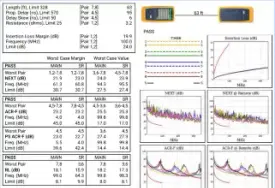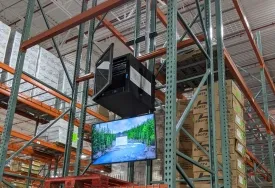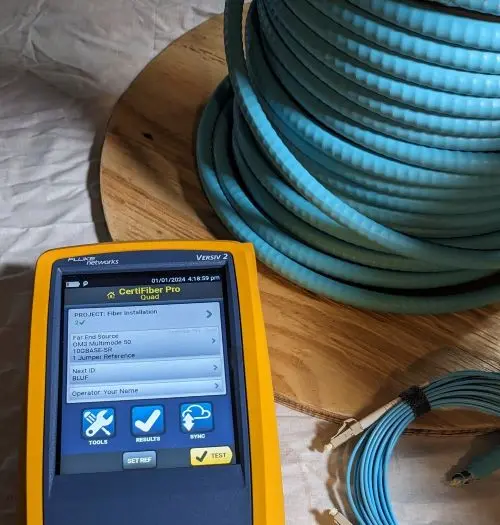Michigan, USA
Fiber Optic Cabling for Government Agencies

Fiber optic cabling has become an essential infrastructure component for government agencies, providing unparalleled speed, reliability, and security in their communication networks. As government operations increasingly depend on digital communication and data transfer, the need for robust and efficient technology is paramount. Fiber optic cables offer significant advantages over traditional copper cables, such as higher bandwidth, which enables the transfer of large volumes of data at lightning-fast speeds. This capability is crucial for government agencies that handle sensitive information and require seamless communication across various departments and locations. Moreover, the low latency and high-quality signal transmission of fiber optics ensure that data is delivered without interruption, supporting real-time decision-making and enhancing overall operational efficiency.
In addition to speed and reliability, fiber optic cabling provides enhanced security features that are critical for government agencies. The unique properties of fiber optics make them difficult to tap into without being detected, significantly reducing the risk of unauthorized access to sensitive information. This level of security is indispensable for agencies involved in national defense, public safety, and other areas where data integrity and confidentiality are of utmost importance. Furthermore, fiber optic networks are less susceptible to electromagnetic interference, which can be a significant vulnerability in traditional cabling systems. This resistance to interference ensures that communication remains stable and secure even in environments where electromagnetic disturbances are prevalent.
Government agencies also benefit from the long-term cost-effectiveness of fiber optic cabling. While the initial installation costs may be higher compared to other types of cabling, the durability and low maintenance requirements of fiber optics lead to reduced operational costs over time. Fiber cables are resistant to weather-related damage, and their longevity minimizes the need for frequent replacements or repairs. This resilience is particularly advantageous for government infrastructure, which often needs to withstand harsh environmental conditions. Additionally, the scalability of fiber optic networks allows agencies to easily expand their communication capabilities as their needs grow, ensuring that they remain at the forefront of technological advancement. As such, investing in fiber optic cabling is not only a strategic move to enhance current operations but also a forward-thinking approach to future-proof government communication systems.
We bring a high level of expertise to every project, backed by years of industry experience. Please visit our work to see detailed examples of our completed projects and the high-quality standards we uphold.

Our team stays up-to-date with the latest network standards and installation practices, ensuring that your systems are cutting-edge and compliant. This means we use the most current technologies and methods to deliver reliable, efficient, and future-proof networking solutions.

We use only the highest quality copper, fiber, and AV products, ensuring superior performance and durability in all our installations. Each product is certified to meet or exceed manufacturers' specifications, guaranteeing optimal reliability and efficiency for your network.

Our data cabling projects are performed professionally, reliably, and with full accountability, giving you peace of mind and confidence in our services.
Upgraded a global financial services company’s WAN to an AT&T rate adjustable 100Mbps interstate-rated switched Ethernet circuit. Install flexible conduit from the parking garage telco room to the building interior. Pull 300’ CAT 5E CMP cable from AT&T demarc using the building’s existing conduit over the lobby and up to the tenant’s 3rd floor MDF...
Complete build-out of the cable plant for a national fine dining restaurant. Install flame-retardant telecom backboards in the electrical room. Install an 11U wall-mount open swing rack on the backboard. Ground rack to building UFER with #6 AWG. Core drill into the masonry block wall and install 1-¼ EMT sleeves. Build overhead cable support system in kitchen and dining...
Achieve higher bandwidth and faster data transfer rates for an investment bank branch’s Main Distribution Frame (MDF) to Immediate Distribution Frame (IDF) backbone. Pull (1) 6-strand armored fiber, 50 MIC MM OM4 cable and (4) CAT 6 CMP cables from 1st floor MDF to 1st floor IDF using existing cable pathways. Ground armored fiber to building UFER. Terminate, certify, and label all...
Complete network build-out of the appliances & kitchen cabinets department for a national home improvement retailer. Label existing data and voice cabling that connects to existing store terminals, printers, and phones. Reroute existing cabling to a temporary location. Move store terminals, printers, and phones to...

Michigan, a dynamic and diverse state located in the Great Lakes region of the United States, is renowned for its striking natural beauty, vibrant culture, and robust economy. With a population of approximately 10 million residents, Michigan is the 10th most populous state in the nation, offering a blend of urban excitement and rural tranquility.
One of Michigan's most distinctive features is its unique geography, being the only state split into two large peninsulas – the Upper and Lower Peninsulas, separated by the majestic Straits of Mackinac. This geographical division contributes to Michigan's extensive 3,288 miles of freshwater coastline, the longest of any political subdivision in the world, making it a haven for water enthusiasts and nature lovers. The state's abundant natural resources, including its vast forests and numerous inland lakes, support a thriving outdoor recreational industry.
Michigan's cultural landscape is equally compelling, with a rich history deeply rooted in Native American heritage, European settlement, and the automotive revolution. The city of Detroit, known as the birthplace of the American auto industry, is home to the "Big Three" automakers: General Motors, Ford, and Stellantis North America. This legacy has earned Michigan the nickname "The Automotive State," which continues to be an economic powerhouse and innovation hub with a growing focus on advanced manufacturing and technology.
Detroit also boasts a vibrant arts scene, famous for its contributions to music, particularly Motown and techno. Visitors can explore landmarks such as the Detroit Institute of Arts, which houses one of the most significant art collections in the country, and the Motown Museum, offering a nostalgic journey through the storied history of Hitsville U.S.A.
Ann Arbor, another key city, is home to the University of Michigan, a prestigious institution recognized for its research contributions and academic excellence. The city thrives on a blend of youthful energy and cultural diversity, offering numerous festivals, theaters, and galleries that enrich the community.
Michigan's economy is bolstered by a diverse range of industries beyond automotive, including agriculture, manufacturing, information technology, and tourism. The state's fertile farmland produces an array of crops, with Michigan being a top producer of cherries, blueberries, and apples. Additionally, the burgeoning craft beer industry and a growing number of wineries highlight Michigan's emerging role in artisanal food and beverage production.
For residents, Michigan offers a high quality of life, with affordable housing, excellent educational institutions, and a strong sense of community. The state is also appealing to businesses, thanks to its strategic location, skilled workforce, and supportive business environment.